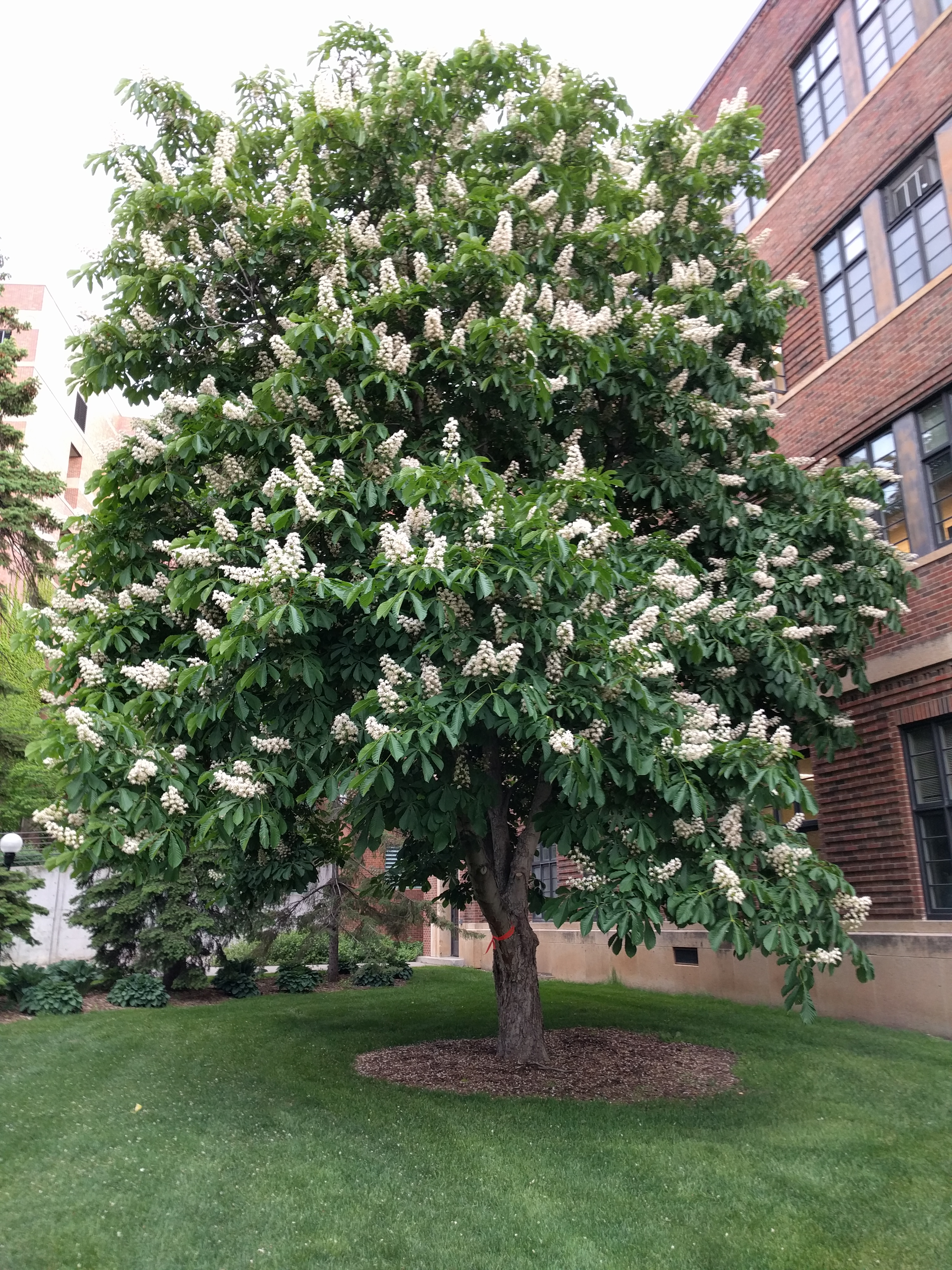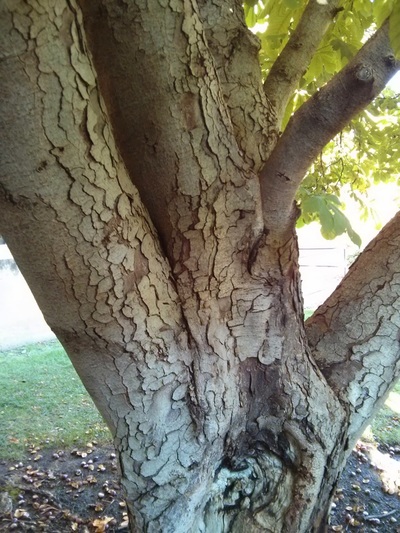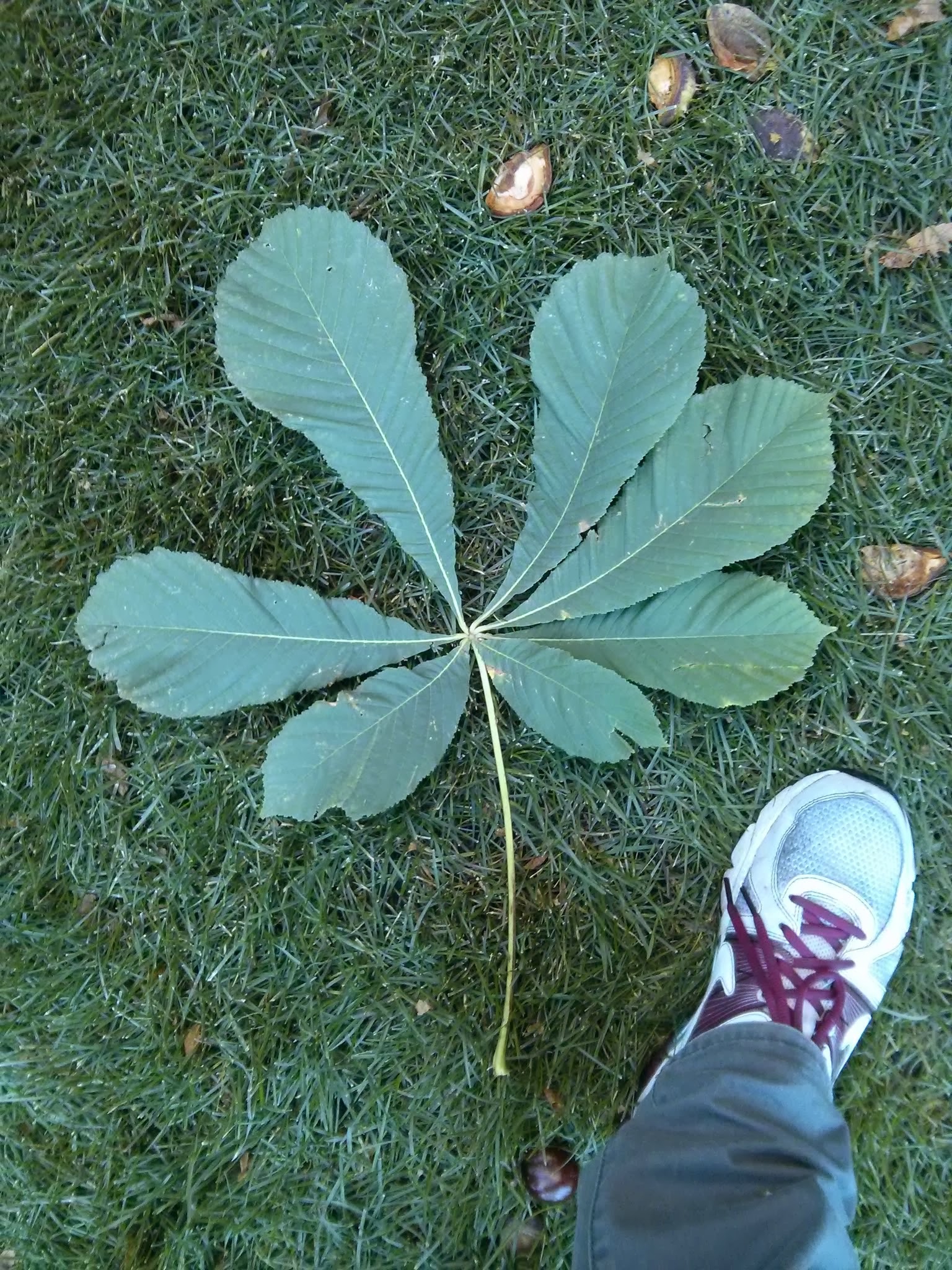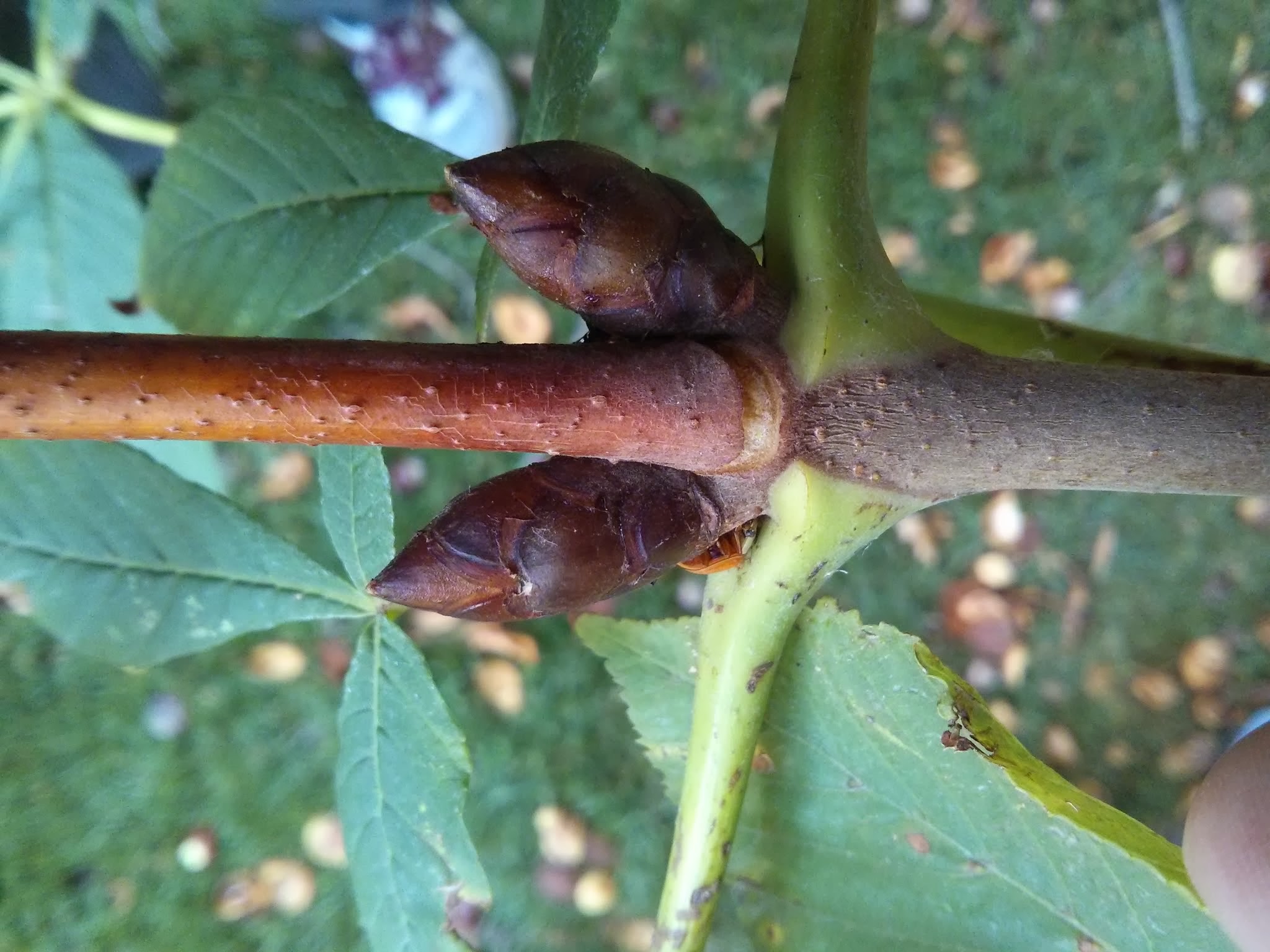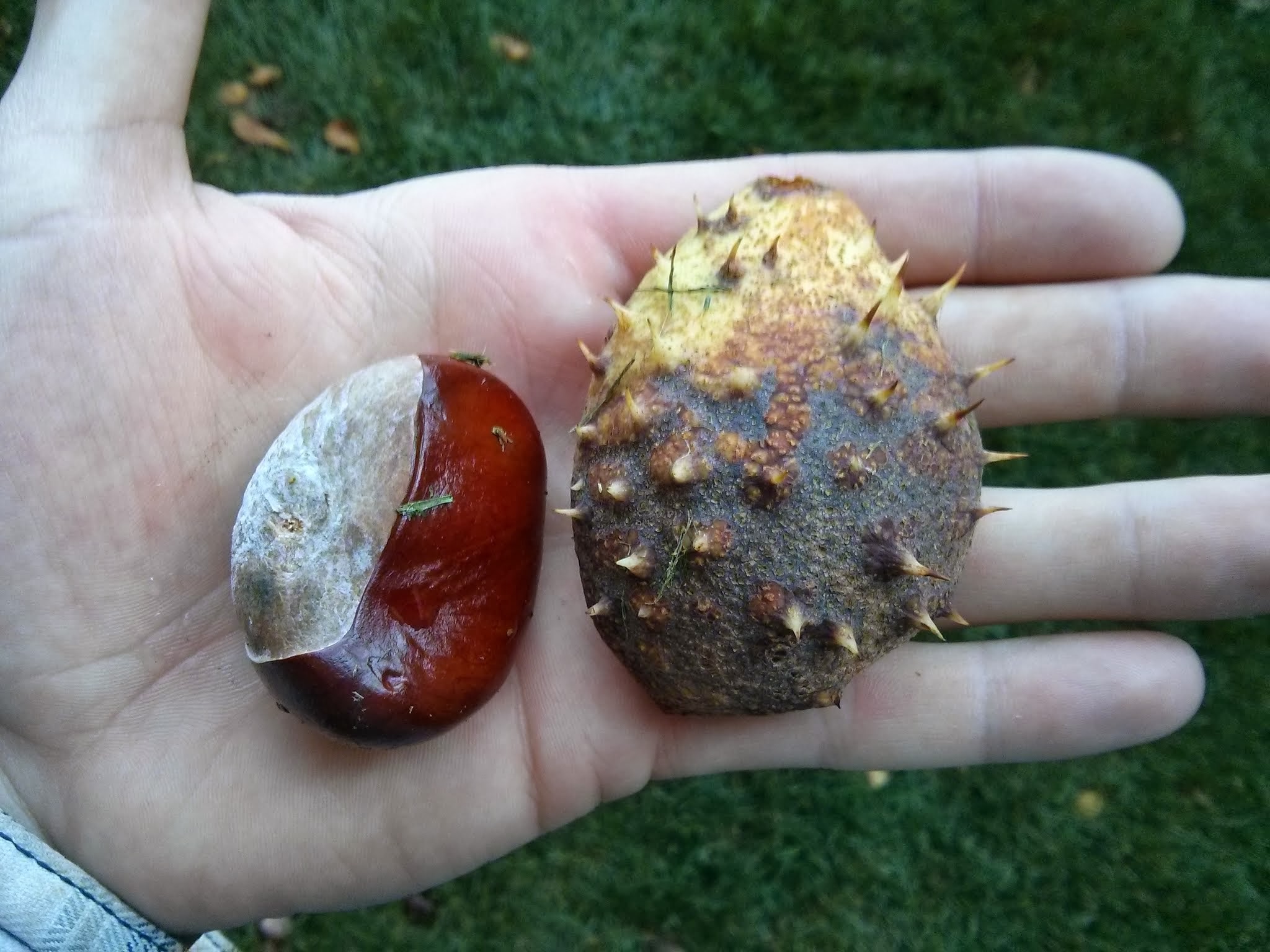Common Name: horse chestnut
Scientific Name:
Family: Sapindaceae
Genus: Aesculus
Species: A. hippocastanum
Hardiness Zone: 3 to 8
Height: 50 to 75 ft
Width: 40 to 65 ft
Common Characteristics:
The horse chestnut is a medium-sized tree that can reach heights of 40 to 60' tall and 40 to 60' wide. It has an upright single trunk that branches low to create a spreading round oval crown. The bark is gray to dark brown and with age becomes platy with many furrows. Horse chestnut has large terminal buds that are reddish-brown in color and resinous. The dark green palmately compound leaves typically have 7 leaflets, though occasionally only 5. Leaves are oppositely attached to the stem and are 5-10" in length. Showy white flowers in upright panicles appear in mid-spring. It produces fruit in the form of a green, leathery, spiky capsule containing 1-3 smooth inedible nuts.
Where it Grows:
Grows best in moist, well-drained soils. Can tolerate alkaline and clay soils. It will tolerate some road salts. Best in full sun to partial shade. Does well in the urban landscape.
How it’s Used:
Horse chestnut is suited for use as an urban shade tree, particularly in parks or gardens.
Ecosystem Services:
This tree is used by browse animals, migrant birds, and songbirds.
Where it is Native to:
The horse chestnut is native to the Balkans but is well suited for growing in Minnesota.
Known Varieties and Their Traits:
Baumann's horse-chestnut (Aesculus hippocastanum 'Baumannii'): A double-flowered cultivar that produces no nuts.
Problems:
This tree is prone to leaf scorch and a fungal leaf blotch.
References:
